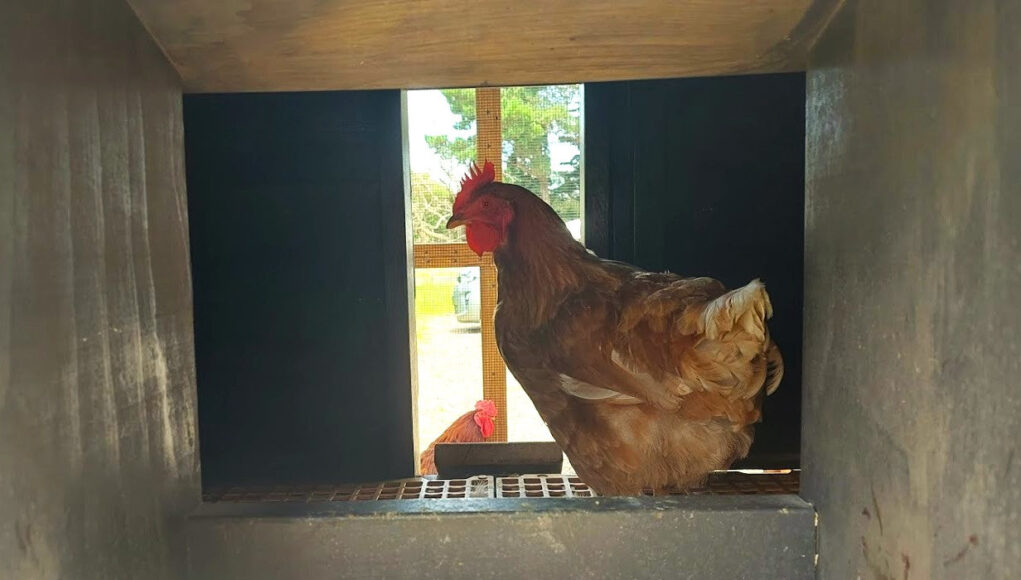Nesting is a critical aspect of a chicken’s life, and understanding the temperature impact on nesting can help breeders and hobbyists alike ensure the health and productivity of their flocks. The temperature impact on nesting is a critical factor that cannot be overlooked. As global temperatures fluctuate due to climate change, the effects on nesting behaviors are becoming increasingly apparent. Understanding these changes is key to maintaining healthy and productive chicken populations.

The Importance of Temperature in Nesting
Temperature is a vital environmental factor that influences the nesting habits of chickens. Chickens are sensitive to their surroundings, and even slight changes in temperature can significantly affect their nesting behaviors. Optimal temperatures ensure that hens are comfortable, which in turn increases egg production and improves the overall health of the flock.
Optimal Nesting Temperature
For chickens, the ideal nesting temperature ranges between 55F and 75F. Within this range, hens are more likely to lay eggs consistently and maintain good health. Temperatures outside this range can lead to stress, decreased egg production, and health issues.
Effects of High Temperatures
High temperatures can have a detrimental effect on the nesting habits of chickens. When temperatures rise above the optimal range, chickens may experience heat stress. This can lead to decreased egg production as hens become uncomfortable and stressed. It’s essential to provide adequate ventilation and shade to mitigate these effects. For ideas on ventilating nesting boxes, you can visit how to ventilate nesting boxes.
Heat Stress and Its Consequences
Heat stress is a significant concern for chickens exposed to high temperatures. It can lead to a host of problems, including reduced egg quality, increased mortality rates, and behavioral changes. Providing cooling solutions, such as fans or misting systems, can help alleviate heat stress.
Effects of Low Temperatures
Conversely, low temperatures can also impact the nesting habits of chickens. Cold environments can cause hens to conserve energy, leading to a decrease in egg production. Providing proper insulation and bedding during colder months is crucial for maintaining nesting behaviors. Consider using organic bedding to help insulate nesting boxes and keep your hens warm.
Cold Stress and Its Impact
Cold stress can lead to health issues in chickens, such as frostbite and respiratory problems. Ensuring that nesting areas are well-insulated and free from drafts is essential to prevent these problems from occurring.
Adapting to Climate Change
As climate change continues to affect global temperatures, chicken keepers must adapt to these changes to ensure the welfare of their flocks. Implementing strategies to manage temperature extremes is crucial for maintaining healthy and productive chickens.
Practical Solutions for Temperature Management
There are several practical solutions for managing the temperature impact on nesting in chickens. These include providing shade, ventilation, and insulation in nesting areas. Additionally, monitoring weather forecasts and adjusting care routines accordingly can help mitigate temperature-related issues. You can find innovative chicken nesting box ideas to suit various climates.
Shade and Ventilation
Providing adequate shade and ventilation is essential for managing high temperatures. Trees, awnings, and purpose-built shade structures can help keep nesting areas cool. Ensuring proper airflow through the nesting area is also crucial for reducing heat buildup.
Insulation and Heating
In colder climates, insulation and heating solutions can help maintain optimal temperatures in nesting areas. Insulating nesting boxes and coops with materials such as straw or hay can help retain heat, while safe heating solutions can provide additional warmth during extreme cold spells.
Monitoring and Adjusting Care
Regularly monitoring temperature conditions and adjusting care routines accordingly is crucial for managing the temperature impact on nesting. This includes keeping an eye on weather forecasts and making necessary adjustments to ensure the welfare of your chickens.
Weather Forecasting
Keeping informed about weather forecasts allows chicken keepers to anticipate temperature changes and prepare accordingly. This can involve adjusting feeding schedules, providing additional water, or implementing temporary cooling or heating solutions as needed.
Adjusting Feeding and Watering
During extreme temperatures, adjusting feeding and watering routines can help support the health of your chickens. Providing additional water during hot weather and ensuring that feed is not spoiled by heat or moisture can help maintain the well-being of your flock.
Conclusion
Understanding the temperature impact on nesting is essential for maintaining healthy and productive chicken populations. By implementing practical solutions and adapting to climate changes, chicken keepers can ensure the welfare of their flocks. For more information on preventing broken eggs in nesting boxes, visit avoiding broken eggs.

FAQ
How does temperature affect egg production?
Temperature plays a crucial role in egg production. Extreme temperatures can cause stress in chickens, leading to decreased egg production and lower egg quality.
What is the ideal temperature for chicken nesting?
The ideal temperature range for chicken nesting is between 55F and 75F. This range ensures the comfort and productivity of hens.
How can I protect my chickens from heat stress?
Providing shade, ventilation, and access to fresh water are essential steps in protecting chickens from heat stress. Additionally, monitoring weather forecasts and adjusting care routines can help mitigate heat-related issues.
This article contains affiliate links. We may earn a commission at no extra cost to you.











